Cappuccino Ingredients: Everything You Need to Know for the Perfect Cup
A cappuccino isn’t just any coffee drink; it’s a classic Italian masterpiece that harmoniously blends espresso, steamed milk, and foam. Each ingredient and every step in its preparation play a crucial role in crafting that creamy, satisfying cup we all love. If you’ve ever wondered what goes into making the perfect cappuccino, you’re in the right place. Let’s dive into the ingredients and techniques that contribute to its rich flavor and delightful texture.
Introduction to Cappuccino
The cappuccino has deep roots in Italian coffee culture. Its name is inspired by the Capuchin monks, whose brown robes resemble the coffee’s rich color when mixed with milk. Known for its robust espresso flavor, creamy steamed milk, and frothy top, the cappuccino has become a beloved classic around the world.
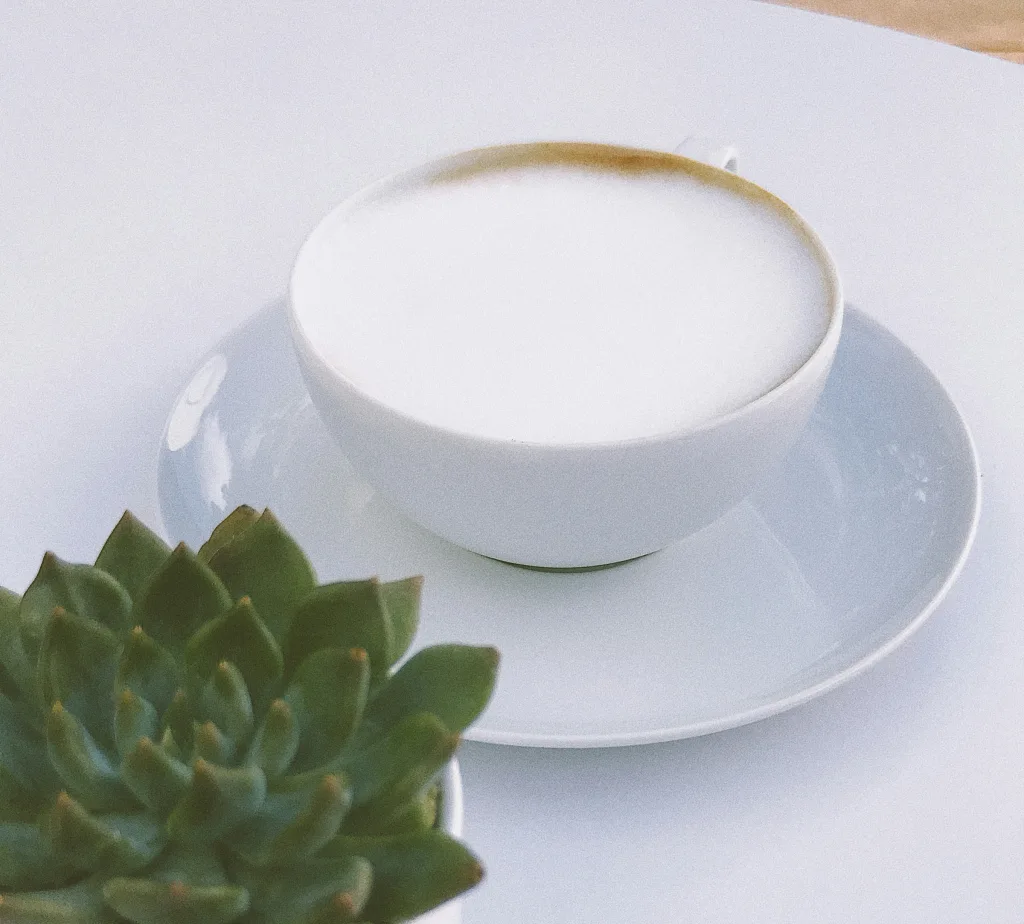
The Basic Ingredients of a Cappuccino
A traditional cappuccino is composed of three main ingredients:
- Espresso: The concentrated coffee that forms the bold base.
- Steamed Milk: Adds creaminess and balances the intensity of the espresso.
- Milk Foam: Provides a light, airy finish and a touch of elegance.
Using quality ingredients elevates the flavor and overall experience of a cappuccino. Each component requires attention to detail to achieve the perfect balance.
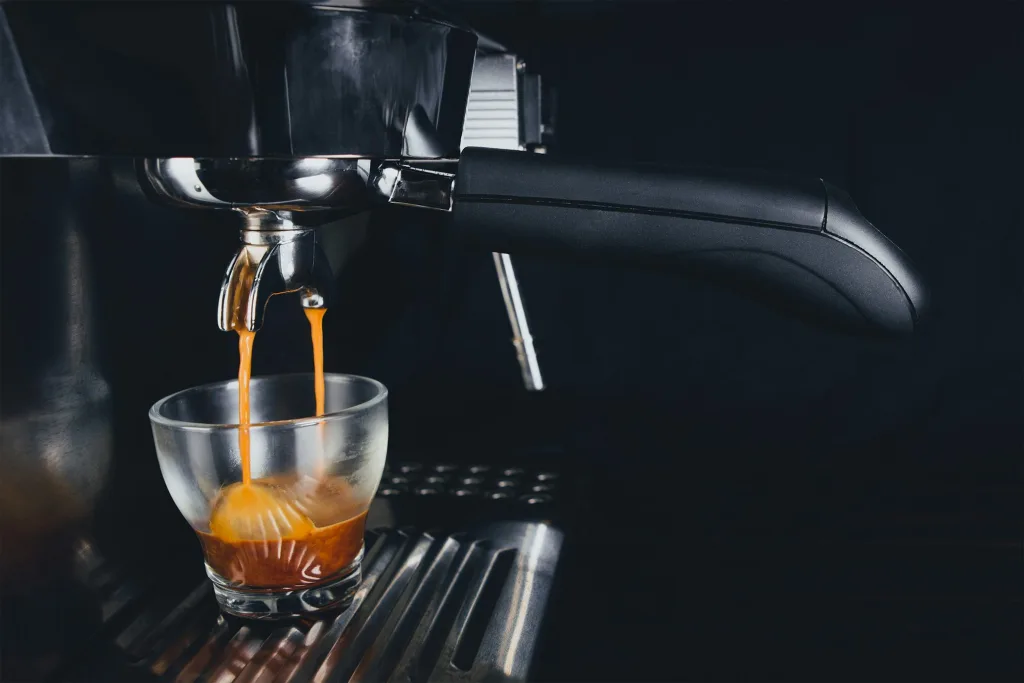
Choosing the Right Coffee Beans
Selecting high-quality coffee beans is crucial for a flavorful cappuccino. While medium to dark roasts are traditional, experimenting with lighter roasts can introduce interesting flavor notes. Always opt for fresh, whole beans and grind them just before brewing to preserve their aroma and taste.
Mastering Espresso Preparation
Creating the perfect espresso shot is the foundation of a great cappuccino. Here’s how to do it:
- Grind: Use a fine grind for optimal extraction.
- Dose: Measure about 18-20 grams of coffee per shot.
- Tamp: Press the coffee grounds evenly to ensure uniform extraction.
- Brew: Aim for a brew time of 25-30 seconds for a balanced shot with a rich crema on top.
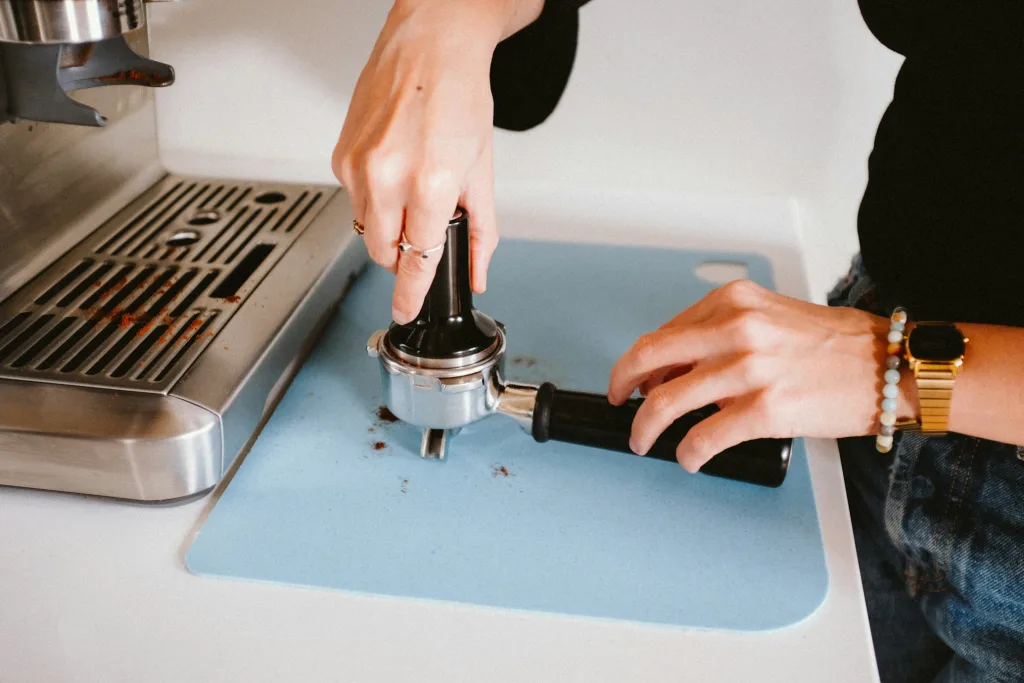
The Art of Steaming Milk
Steamed milk adds a velvety texture that complements the espresso. Heating the milk to around 150°F (65°C) releases its natural sweetness without scalding it. Here’s how to steam milk like a pro:
- Choose the Right Milk: Whole milk creates the creamiest texture, but you can use alternatives based on your preference.
- Steam: Submerge the steam wand just below the surface to introduce air, then lower it to heat the milk evenly.
- Texture: Aim for a smooth, silky consistency without large bubbles.
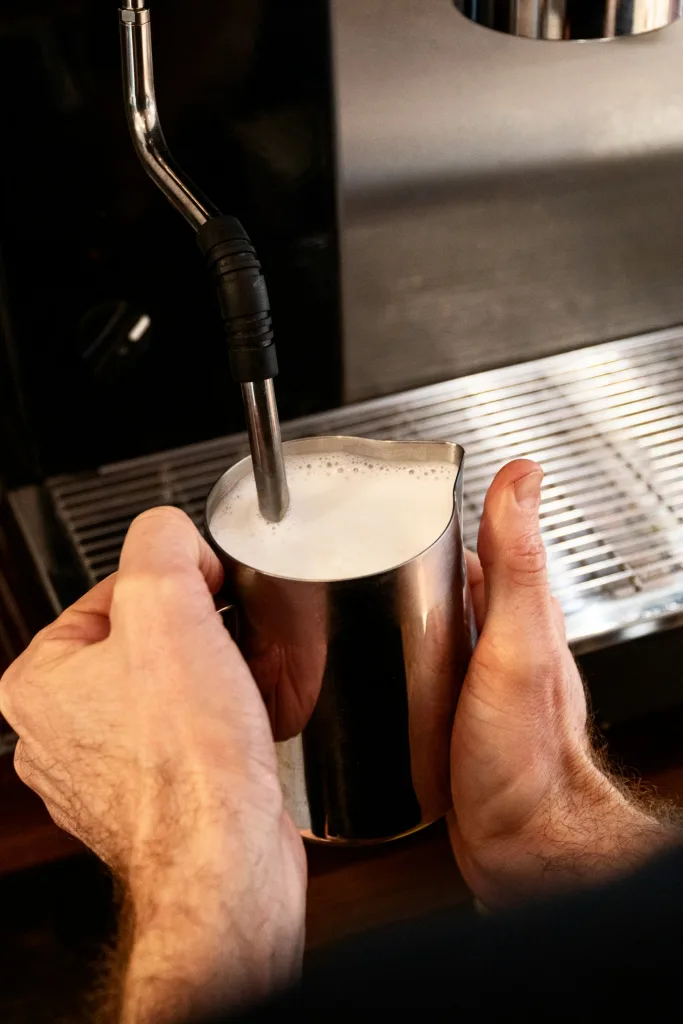
Perfecting the Milk Foam
The foam atop a cappuccino isn’t just for looks—it adds a delightful mouthfeel. To create the perfect microfoam:
- Technique: Keep the steam wand near the surface to introduce tiny air bubbles.
- Consistency: The foam should be creamy and velvety, not dry or overly frothy.
- Finish: Tap the milk pitcher gently on the counter to eliminate any large bubbles.
Balancing the Milk-to-Coffee Ratio
A classic cappuccino follows a 1:1:1 ratio of espresso, steamed milk, and foam. This balance ensures the rich coffee flavor shines through while being perfectly complemented by the milk.
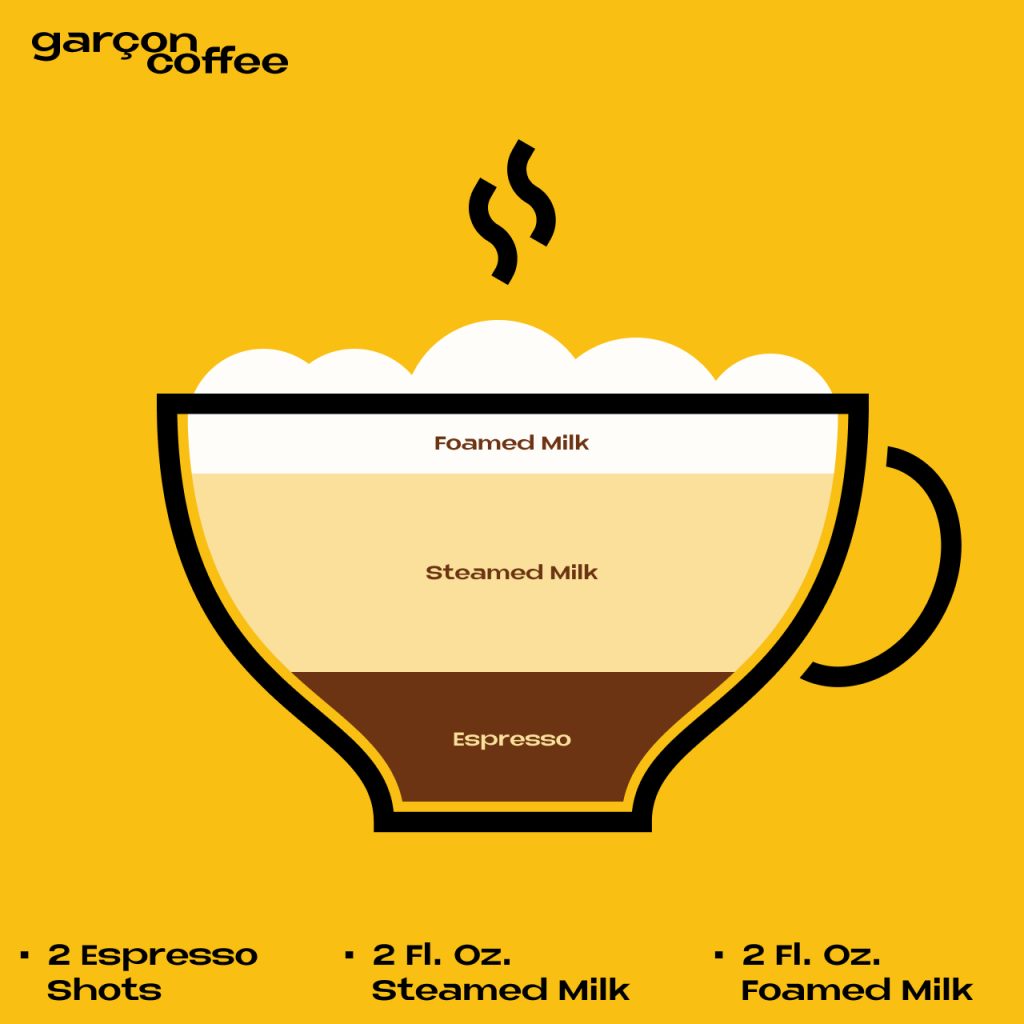
Exploring Different Types of Milk
The type of milk you use can significantly impact the taste and texture of your cappuccino:
- Whole Milk: Offers the creamiest texture and enhances the drink’s sweetness.
- Skim Milk: Creates lighter foam but lacks the richness of whole milk.
- Non-Dairy Alternatives:
- Almond Milk: Adds a nutty flavor; foams moderately well.
- Oat Milk: Creamy and foams nicely; a great dairy-free option.
- Soy Milk: Foams well but can have a distinct taste.
Adding Flavors to Your Cappuccino
While the classic cappuccino is delightful on its own, you can customize it with subtle flavor additions:
- Vanilla: Introduces a sweet, aromatic layer.
- Cinnamon: Enhances the natural flavors of the coffee.
- Chocolate: A dusting of cocoa powder adds depth and richness.
Essential Equipment for Making Cappuccinos
To craft the perfect cappuccino at home, you’ll need:
- Espresso Machine: Essential for pulling authentic espresso shots.
- Grinder: A burr grinder is best for achieving a consistent grind.
- Milk Frother or Steam Wand: For steaming and frothing milk to the right texture.
- Thermometer: Helps monitor milk temperature to avoid scalding.
Step-by-Step Cappuccino Recipe
Ready to make your own cappuccino? Follow these steps:
- Brew the Espresso:
- Grind fresh coffee beans finely.
- Tamp the grounds evenly.
- Pull a shot of espresso into your cup.
- Steam the Milk:
- Pour cold milk into a frothing pitcher.
- Submerge the steam wand and introduce air for froth.
- Heat until the milk reaches around 150°F (65°C).
- Combine:
- Pour the steamed milk over the espresso, holding back the foam with a spoon.
- Top with the milk foam to complete the 1:1:1 ratio.
Getting Creative with Latte Art
Once you’ve mastered the basics, why not try your hand at latte art? Start with simple designs like hearts or leaves. The key is to pour the milk steadily and use a small pitcher for better control.
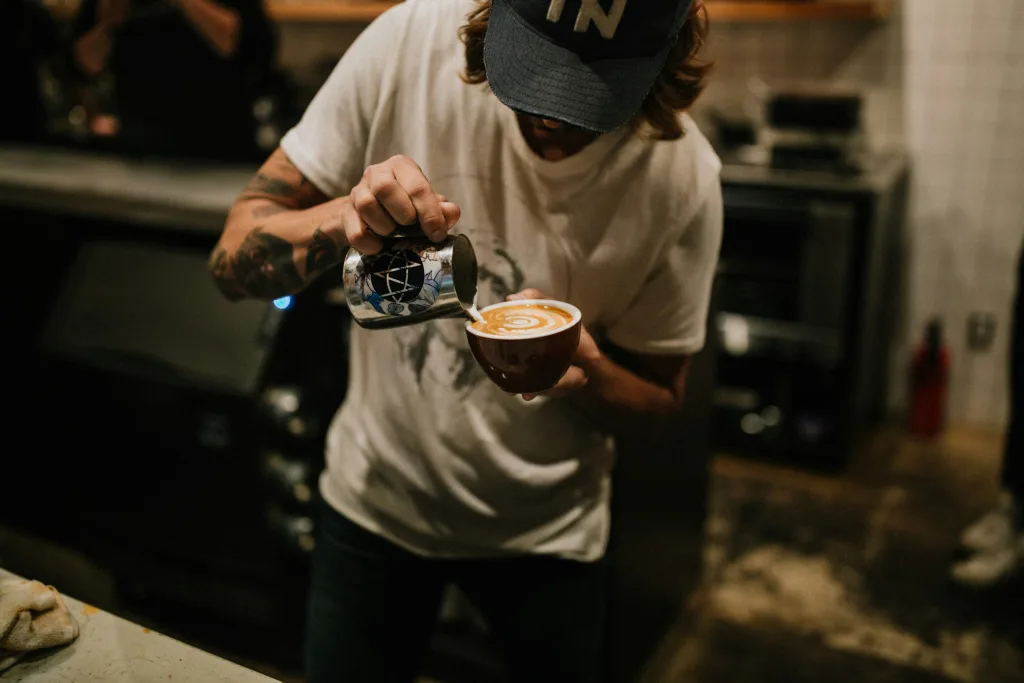
Tips for Crafting the Perfect Cappuccino
- Use Fresh Beans: Freshly roasted beans make a significant difference.
- Maintain Consistent Temperature: Avoid overheating milk to prevent a burnt taste.
- Stick to the Ratios: The 1:1:1 ratio is key to a balanced cappuccino.
- Practice Makes Perfect: Don’t be discouraged if your first attempts aren’t perfect.
Frequently Asked Questions
What is the difference between a cappuccino and a latte?
A cappuccino has equal parts espresso, steamed milk, and foam. A latte contains more steamed milk and a thinner layer of foam, resulting in a creamier, milder coffee.
Can I make a cappuccino without an espresso machine?
Yes! You can use a moka pot to brew strong coffee similar to espresso and a handheld frother or French press to froth milk.
How do I make a non-dairy cappuccino?
Use non-dairy milks like oat, almond, or soy. They each have unique flavors and frothing abilities, so you might need to experiment to find your favorite.
What temperature should the milk be?
Aim for around 150°F (65°C). This temperature brings out the milk’s natural sweetness without scalding it.
Can I add sugar to a cappuccino?
Absolutely. For best results, add sugar to the hot espresso shot so it dissolves completely before adding milk.
What’s the best way to practice latte art?
Start with simple designs and use whole milk for better microfoam. Watching tutorials and practicing regularly will improve your skills over time.
Conclusion
Crafting the perfect cappuccino is both an art and a science. With high-quality ingredients, the right equipment, and a bit of practice, you can create a balanced, flavorful cappuccino that rivals those from your favorite coffee shop. Focus on each step—from selecting the right beans to perfecting your milk frothing technique—and you’ll be well on your way to enjoying the ultimate cup.




